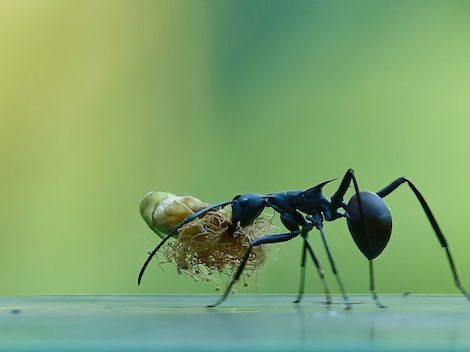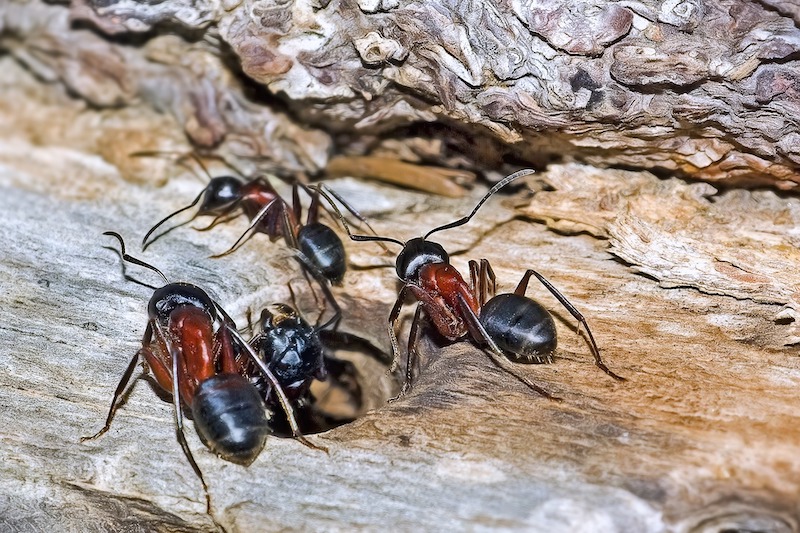
It’s summertime to break out the barbeque, gather some friends, and enjoy that backyard deck. Just as you sink into a chair to relax with a cold drink, an ant scurries across your foot. You shake it off, but then notice more of the little pests running up and down the rails.
Ants, just like us, become more active as the weather warms. Most likely you have a satellite nest in your home and as temperatures rise, the ants wake up and go in search of their parent colony that is still outside. While the main nest might not be within your walls, any nest is a pest problem that’s just waiting to grow.
Ants Have Names
What you see are probably carpenter ants, but not all carpenter ants are the same. Here in the Pacific Northwest, we have three types. Usually what you see is Camponotus, a big name for a black ant with reddish legs. Next is the moisture ant. Yellow to dark brown in color, these guys prefer rotting wood because, as the name implies, they like moist areas. Finally, we have the velvety tree ants with a name that sounds like it should be a plush toy, but don’t be fooled, the name comes from the fine hairs that line their abdomens. They come in both red and black.
Signs of An Ant Problem

Knowing what the ants look like helps if you can see them close-up, but there are also some sure signs that what you see are carpenter ants. Carpenter ants don’t actually eat wood, they just burrow into it so they leave behind piles of sawdust. All that boring into the wood is a noisy business, so if you’re near a nest, you can hear them at work making a scraping-like sound. And because they often travel back and forth between nests, you might see trails of them scurrying around. In fact, that’s usually the first sign of trouble.
Time For Pest Control
To rid your home of these pests, it’s best to call in the experts because to successfully eradicate them, the nest or nests will have to be found and removed or they will continue to breed and march across your walls and floors. Each colony has one main nest, but there could be up to twenty satellite nests sprouting across your property, both inside and out. The nests can either be removed directly, or a perimeter treatment can be done on your property where a pesticide is transferred from ant to ant until the colony is gone.
If a nest is found in your house, you might also have a moisture problem and wood rot since that’s an ideal climate for the ant nest. Seeing carpenter ants could be a warning sign of a larger problem. So really you can’t blame the ants, they just took advantage of the situation.
Carpenter ants aren’t all bad. They eat other insects that would otherwise feast on our forests, and, in turn, the ants become a food source for some of our more preferred woodland creatures, like birds. So don’t hate them, but feel free to remove them from places where they just don’t belong.
———————————————————————
Bugged By Bees? Contact Northwest Pest Control in your area by phone from this page. More information on bees and the Oregon State Beekeepers Association can be found here.